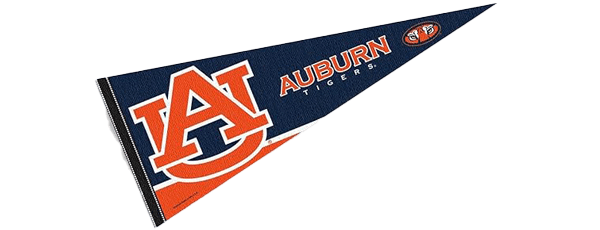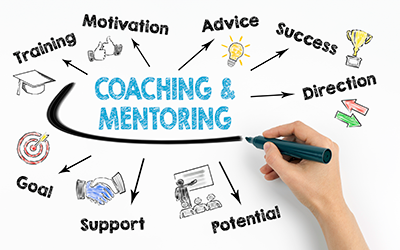Are your enrollment numbers where they need to be? Don’t panic!
 As the year winds down, admissions and marketing staff at many schools are busy analyzing funnel activity and determining what’s next. Do you have enough leads? How many applications are started vs. completed? What are your attendance numbers for upcoming events? What needs to be done to ensure you hit your enrollment goals?
As the year winds down, admissions and marketing staff at many schools are busy analyzing funnel activity and determining what’s next. Do you have enough leads? How many applications are started vs. completed? What are your attendance numbers for upcoming events? What needs to be done to ensure you hit your enrollment goals?
While it can be tempting to make a split decision to try something new if your numbers aren’t where you want them to be, it may be more advantageous to first re-examine your strategy and find ways to make minor tweaks to the plan you’ve already put in place.
Consider these key questions prior to making major shifts to your marketing or recruiting plans:
Does your strategy have these key elements?
Every good recruiting and marketing strategy has key elements that make them more likely to succeed.
- Audience segmentation based on prospective students’ needs
- Accurate positioning of your school and programs based on audience
- Tactics organized by channel
- Plan for monitoring
If you have these pieces in place, you can rest assured that you have a solid foundation to build from when planning ways to fill your funnel.
Did you document key performance indicators (KPI’s)?
For admissions teams, it’s easy to focus only on the end goal of seated students. But it’s likely that you have historical data at your disposal that can help you determine Year-Over-Year (YOY) numbers so you can track progress during the recruiting cycle. If your KPI’s don’t currently align with key dates throughout the year, this is an excellent place to begin charting a path toward analysis.
For example, you can start by examining event attendance for Fall, Winter and Spring events and comparing them to the current recruiting year. Are you on track? You can also look at application data to determine when a majority of your applications were started and completed over the last 2-3 years. You may be surprised to find out that you are in alignment with previous years and closer than you thought to your target.
What are the levers you can pull to optimize your marketing?
In your marketing and communications plan, you may use several tactics to communicate with leads and encourage action. Some are easier to increase than others depending on effort, resources, and budget. For example, for your unpaid tactics, consider optimizing your website, increasing emails, social posts or adding an admissions webinar. For paid tactics, does it make sense to shift a portion of your digital advertising budget from an area that isn’t working to a tactic that is performing well? Or to try a new channel or media product?
If you are looking for ways to determine whether your marketing and recruiting strategy will hit your target enrollment goals, GPRS can help. Our experienced team can evaluate where your strategy stands, how to enhance your tactics, and ways to increase enrollment through digital advertising. We can also help you create a tracking dashboard that will inform your decision-making for future campaigns. Contact us today to start the conversation.

 Now more than ever, people are upskilling to keep up with the demands and pressures of the continually evolving economic landscape. To position your school as a partner along your prospects’ career paths, you will need a clearly defined strategy with multiple touchpoints showing how your program can help develop their talents and skills to succeed in the business world today and in the future.
Now more than ever, people are upskilling to keep up with the demands and pressures of the continually evolving economic landscape. To position your school as a partner along your prospects’ career paths, you will need a clearly defined strategy with multiple touchpoints showing how your program can help develop their talents and skills to succeed in the business world today and in the future. If your marketing and admissions teams are currently
If your marketing and admissions teams are currently  In a recent survey conducted by GMAC, it was reported that
In a recent survey conducted by GMAC, it was reported that 
 Your website is your number one vehicle of communication with prospective students. It’s the first place they land when starting their research and it’s the last stop on their journey toward creating and submitting an application. Although there are many other touchpoints throughout the admissions process —
Your website is your number one vehicle of communication with prospective students. It’s the first place they land when starting their research and it’s the last stop on their journey toward creating and submitting an application. Although there are many other touchpoints throughout the admissions process —  Lately, it may seem as if the term “storytelling” is everywhere. Influencers are using it to showcase their glamorous lives while selling products, and brands are using it to create a connection with potential customers. So how can your school make the most of this marketing tactic to boost your content’s value?
Lately, it may seem as if the term “storytelling” is everywhere. Influencers are using it to showcase their glamorous lives while selling products, and brands are using it to create a connection with potential customers. So how can your school make the most of this marketing tactic to boost your content’s value? What impact do Google search algorithm updates have on your school’s online presence? The answer is, “it depends” on how unique, credible and relevant your existing content is and how you plan to enhance it in the near future. Recently, Google announced that it would be launching a search algorithms update, enabling people to find high-quality content. The
What impact do Google search algorithm updates have on your school’s online presence? The answer is, “it depends” on how unique, credible and relevant your existing content is and how you plan to enhance it in the near future. Recently, Google announced that it would be launching a search algorithms update, enabling people to find high-quality content. The  So, you’ve thought about using video content in your school’s digital advertising strategy, but you’re not sure how to get started. What’s the right length? How can you use videos on social media? In a past article, we covered
So, you’ve thought about using video content in your school’s digital advertising strategy, but you’re not sure how to get started. What’s the right length? How can you use videos on social media? In a past article, we covered  The recent
The recent 
